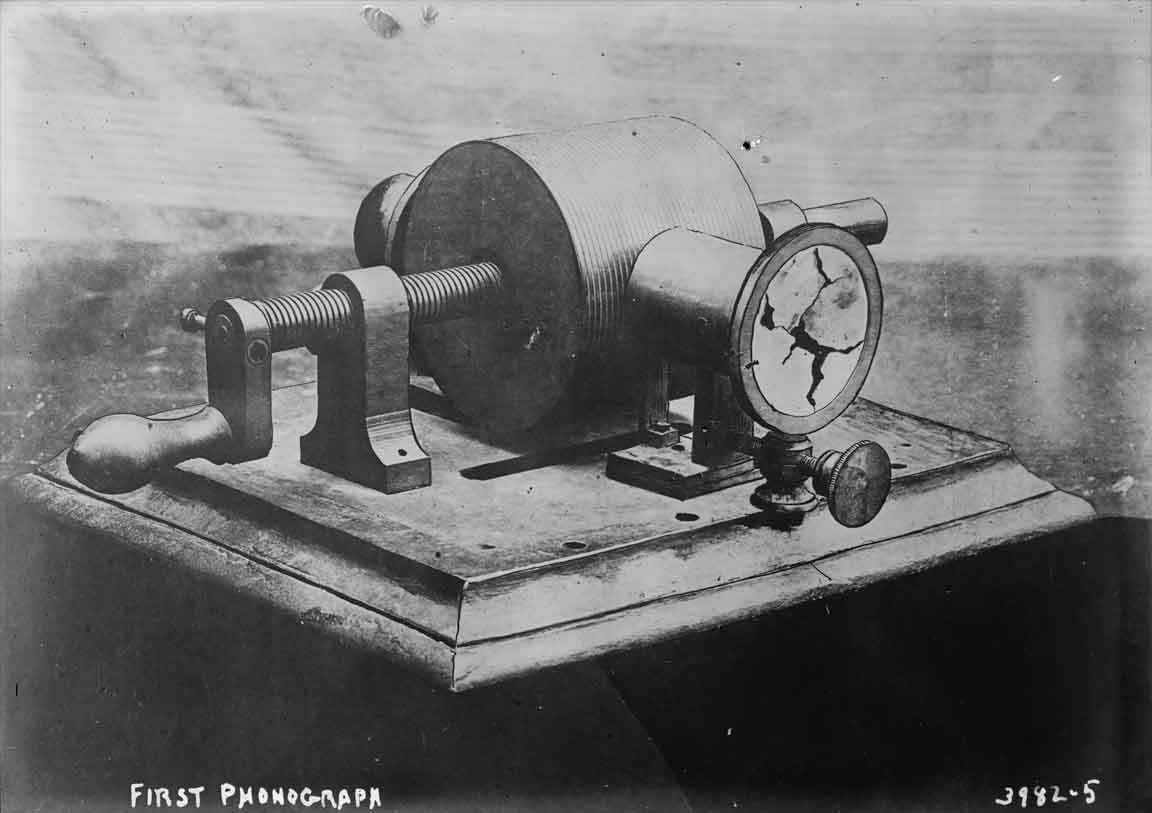Phonograph Invented

On December 15th, 1877 Thomas Edison applied for a patent on his phonograph. Edison initially believed it would be used to record business sessions, or family voices. Edison became famous with this invention and was invited to the White House for a demonstration.
Thomas Edison was researching methods of transcribing telegraph messages by indenting a paper tape. As he was working on it, he realized that the same idea could be used to record telephone conversations. He came up with the idea of a diaphragm that vibrated with sound and would then make indents on paraffin paper. Edison replaced the paper with a metal cylinder covered in tin foil. He gave his mechanic, John Kruesi, a sketch of what to build, and it is said that Kruesi built the first sample in 30 hours. Edison tested the first version of the phonograph by singing “Mary Had a Little Lamb.” The device played it back flawlessly. The accepted date for this occurrence is August 12, 1877. The patent was filed on December 24, 1877.
Edison demonstrated the phonograph for the first time when he brought it to the offices of Scientific American. The magazine reported, “Mr. Thomas A. Edison recently came into this office, placed a little machine on our desk, turned a crank, and the machine inquired as to our health, asked how we liked the phonograph, informed us that it was very well, and bid us a cordial good night.” On January 24, 1878, Edison founded the Edison Speaking Phonograph Company. For the next 20-plus years, sound was recorded on cylinders. Eventually, after the turn of the century, cylinders were replaced by record disks similar to today’s discs.
